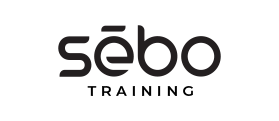Here we’ll go over the different Google Ads settings that are set at the Campaign level.
Campaign Name: Here you can set the name for the campaign that will be seen in the campaigns view
Campaign Status: Change the status from Enabled, Paused, or Removed.
Goal: When you create a campaign, Google Ads allows you to set a goal for that campaign. Depending on the goal, the campaign will have different settings automatically set. In general, we don’t set any goal because we like to have all the control.
Networks: The different networks are the Search Network, Google search partners, and the Display Network. You can review what each different network entails in PPC Terms.
Locations: Choose what locations you want to target. Often it is beneficial to target locations within the location that is already targeted. Each location can have bid adjustments, so if an account is targeted to all of the United States it is useful to also target California since you would then be able to make adjustments to the bid in California as well as the United States. It’s a best practice in accounts targeting all of the United States to also target California, New York, Texas, and Florida since these states have the biggest populations.
Languages: Target your ads to people who speak a certain language.
Bidding: There are multiple different bidding strategies. Manual CPC is a manual bid strategy while the rest are Automated bid strategy. These strategies affect how much the account is going to spend for each click. With Automated bid strategies, Google Ads set’s the bids based on past data and goals that you may have set. View the PPC Terms for information on each different strategy.
Daily Budget: Set how much the campaign will spend daily. This number can go up and down depending on historical data, but Google Ads will keep the average daily spend over a month at the set daily budget.
Start and end dates: If you want the Campaign to start and end on specific dates, set that here.
Dynamic Search Ads: Dynamic Search Ads target relevant searches automatically based on your website, then use headlines automatically customized to people’s actual searches. In general, we don’t use this since we want more control over the keywords triggering our ads, and the ad copy.
Ad Rotation: The optimize option will allow Google to show your ads that are most likely to convert. Do not optimize, will rotate your ads evenly. Take note, on the Search Network, Google Ads will optimize your ad rotation to get the most conversions. On the Display Network, Google Ads will optimize your ad rotation to get the most clicks.
Don’t worry about the other options at this time.
